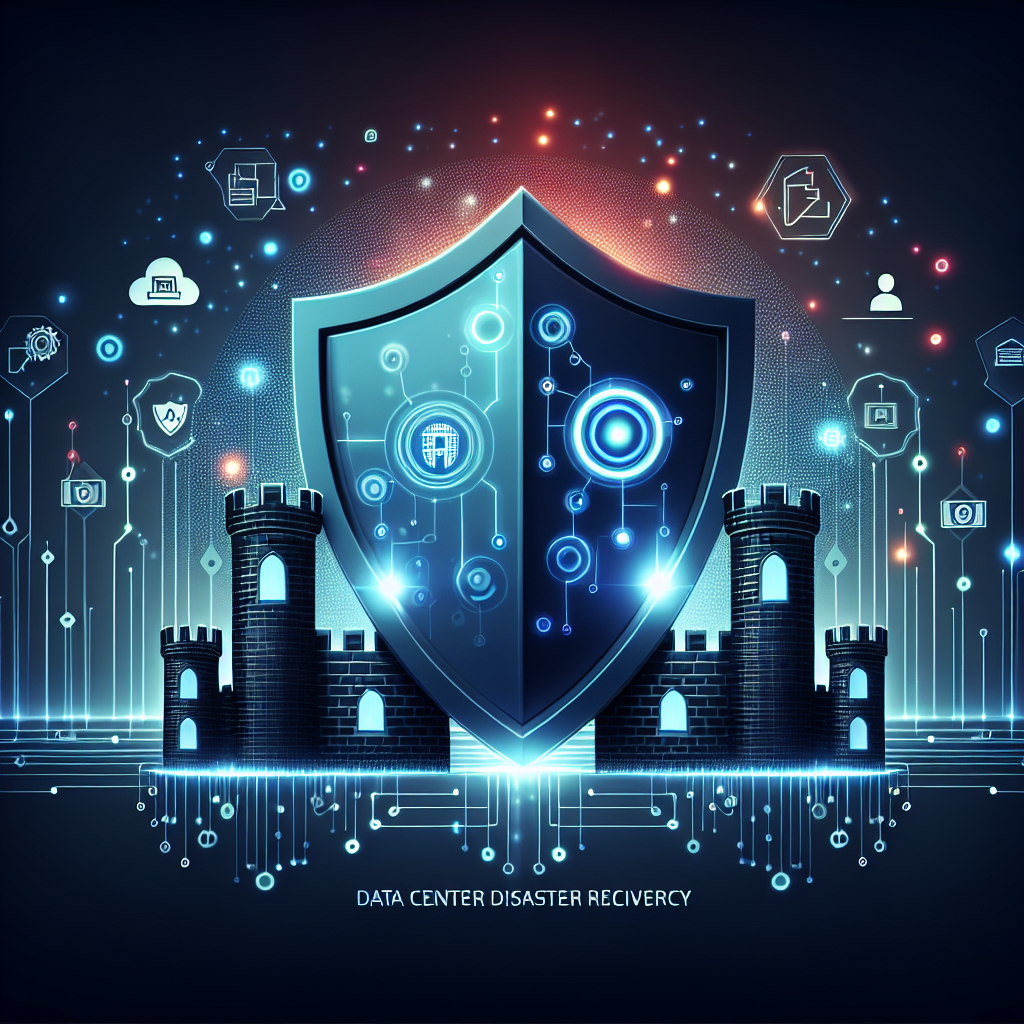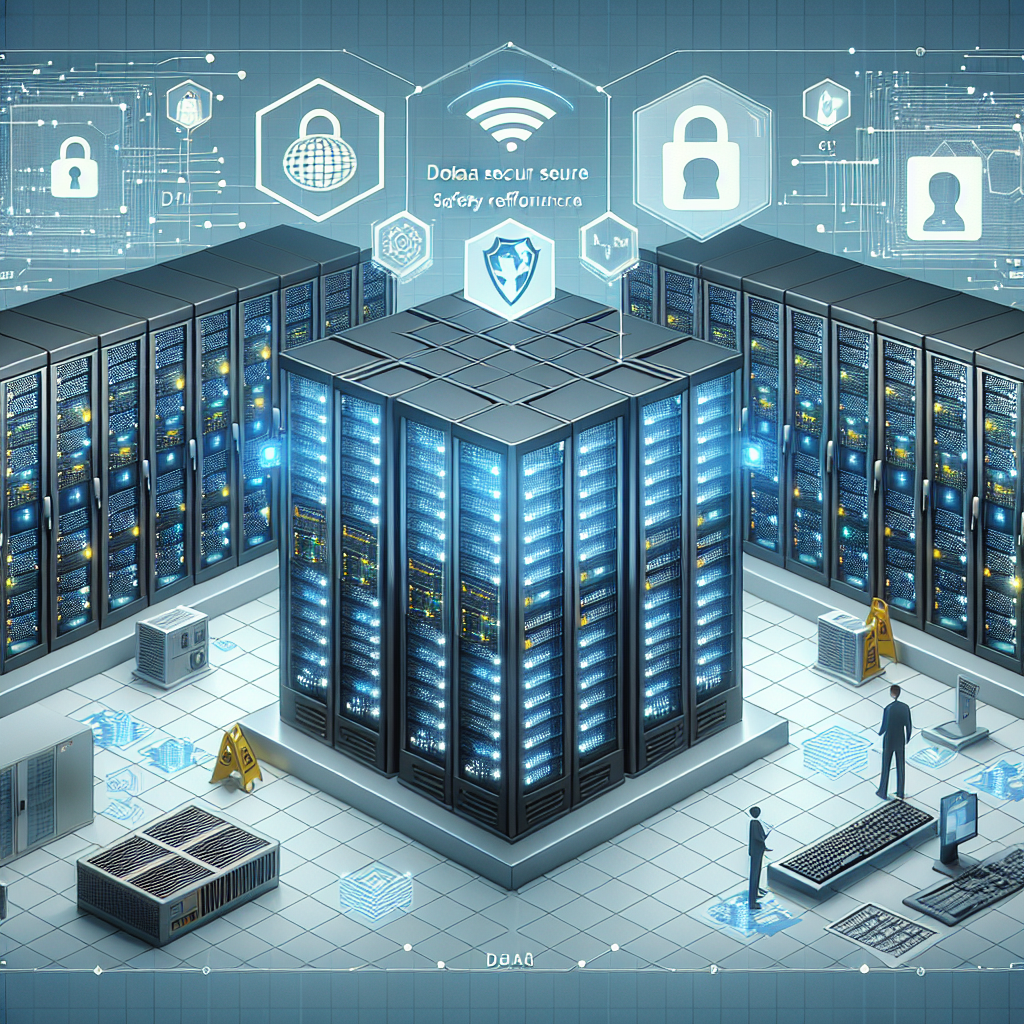Your cart is currently empty!
Tag: Protecting

Protecting Your Business with Data Center Disaster Recovery: Tips and Tricks for Success
In today’s digital age, data is the lifeblood of businesses. From customer information and financial records to intellectual property and operational systems, businesses rely on data to operate efficiently and effectively. However, with the increasing reliance on technology comes the risk of data loss due to disasters such as natural disasters, cyberattacks, and hardware failures. This is where data center disaster recovery comes into play.Data center disaster recovery is the process of protecting and recovering data in the event of a disaster. By implementing a robust disaster recovery plan, businesses can ensure that their critical data is protected and can be quickly restored in the event of a disaster. Here are some tips and tricks for success in protecting your business with data center disaster recovery:
1. Conduct a risk assessment: Before implementing a data center disaster recovery plan, it’s important to assess the risks that your business faces. Consider potential threats such as natural disasters, cyberattacks, and hardware failures, and identify the potential impact these threats could have on your business. This will help you prioritize your disaster recovery efforts and allocate resources effectively.
2. Implement a backup strategy: One of the most important aspects of data center disaster recovery is having a robust backup strategy in place. Regularly back up your critical data to multiple locations, including offsite and cloud storage, to ensure that your data is protected and can be quickly restored in the event of a disaster.
3. Test your disaster recovery plan: Don’t wait until a disaster strikes to test your disaster recovery plan. Regularly conduct tests and simulations to ensure that your plan is effective and can be executed quickly and efficiently in the event of a disaster. Identify any weaknesses or gaps in your plan and make necessary adjustments to improve its effectiveness.
4. Train your employees: Your employees play a crucial role in data center disaster recovery. Ensure that your employees are trained on the procedures and protocols of your disaster recovery plan so that they can respond quickly and effectively in the event of a disaster. Regular training and drills can help ensure that your employees are prepared to handle any disaster situation.
5. Monitor and update your disaster recovery plan: Disaster recovery is an ongoing process, and it’s important to regularly monitor and update your disaster recovery plan to ensure that it remains effective and relevant. Stay abreast of new threats and technologies, and make necessary adjustments to your plan to address any emerging risks.
By following these tips and tricks for success in protecting your business with data center disaster recovery, you can ensure that your critical data is protected and can be quickly restored in the event of a disaster. Don’t wait until it’s too late – take proactive steps to protect your business and safeguard your data today.

Data Center Disaster Recovery: Strategies for Minimizing Downtime and Protecting Critical Information
Data Center Disaster Recovery: Strategies for Minimizing Downtime and Protecting Critical InformationIn today’s digital age, data centers play a crucial role in storing and managing vast amounts of critical information for businesses and organizations. However, with the increasing frequency and severity of natural disasters, cyber attacks, and other unforeseen events, the need for effective disaster recovery strategies has never been more important.
Data center downtime can have a significant impact on a business, leading to lost revenue, damaged reputation, and potential legal implications. Therefore, it is essential for organizations to implement robust disaster recovery plans to minimize downtime and protect critical information.
Here are some key strategies for minimizing downtime and protecting critical information in the event of a disaster:
1. Backup and Recovery: One of the most fundamental aspects of disaster recovery is having a comprehensive backup and recovery plan in place. This involves regularly backing up data and storing it in multiple locations, both on-site and off-site. Cloud-based backup solutions can also provide an added layer of protection by storing data in secure remote servers.
2. Redundancy and Failover: Redundancy is another critical component of disaster recovery. By having redundant systems and failover mechanisms in place, organizations can ensure that their data center operations can continue uninterrupted in the event of a hardware failure or other issue. This may involve having duplicate servers, storage devices, and networking equipment that can seamlessly take over in the event of a failure.
3. Disaster Recovery Testing: It is not enough to simply have a disaster recovery plan in place – organizations must also regularly test and update their plans to ensure they are effective. Regularly conducting disaster recovery tests can help identify any weaknesses or gaps in the plan and allow for adjustments to be made before a real disaster strikes.
4. Data Encryption and Security: In addition to protecting data from physical disasters, organizations must also safeguard their data from cyber threats. Implementing strong data encryption and security measures can help prevent unauthorized access to critical information and ensure that data remains secure in the event of a breach.
5. Partnering with Disaster Recovery Experts: For organizations that may not have the resources or expertise to develop and implement a comprehensive disaster recovery plan on their own, partnering with disaster recovery experts can be a valuable solution. These experts can help assess the organization’s needs, develop a customized disaster recovery plan, and provide ongoing support and monitoring to ensure that the plan remains effective.
In conclusion, data center disaster recovery is a critical aspect of business continuity planning in today’s digital age. By implementing robust backup and recovery strategies, redundancy and failover mechanisms, regular testing, data encryption, and partnering with disaster recovery experts, organizations can minimize downtime and protect their critical information in the event of a disaster. Investing in effective disaster recovery strategies is essential for ensuring the long-term success and resilience of any organization.

Protecting Your Data Center: Essential Safety Measures
Data centers are a crucial component of any organization, serving as the central hub for storing and processing vast amounts of sensitive information. With the increasing threat of cyber attacks and natural disasters, protecting your data center has never been more important. Implementing essential safety measures can help safeguard your data and ensure the continuity of your operations.One of the primary safety measures for data centers is ensuring physical security. This involves restricting access to the data center to authorized personnel only. Implementing measures such as biometric authentication, access control systems, and surveillance cameras can help prevent unauthorized individuals from gaining access to the data center and potentially compromising sensitive information.
In addition to physical security, it is essential to implement cybersecurity measures to protect against cyber attacks. This includes regularly updating security software, conducting regular vulnerability assessments, and implementing encryption to secure data both in transit and at rest. Employee training is also crucial in preventing phishing attacks and other social engineering tactics that cybercriminals may use to gain access to the data center.
Another important safety measure for data centers is implementing a robust disaster recovery plan. This includes regularly backing up data, storing backups offsite, and conducting regular disaster recovery drills to ensure that data can be quickly restored in the event of a disaster. Having a well-thought-out disaster recovery plan can help minimize downtime and ensure the continuity of operations in the event of a catastrophic event.
Regular maintenance and monitoring of data center infrastructure are also essential safety measures. This includes conducting regular inspections of equipment, monitoring temperature and humidity levels, and ensuring that power sources are reliable and redundant. By proactively maintaining and monitoring data center infrastructure, you can prevent potential issues that could lead to data loss or downtime.
In conclusion, protecting your data center is essential to ensure the security and continuity of your operations. By implementing essential safety measures such as physical security, cybersecurity, disaster recovery planning, and regular maintenance and monitoring, you can safeguard your data and mitigate potential risks. Investing in data center safety measures is an investment in the long-term success and security of your organization.
